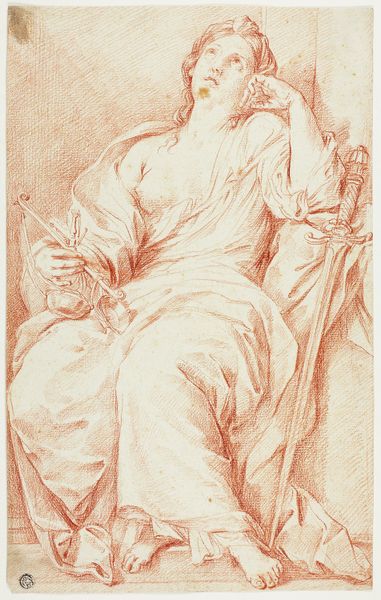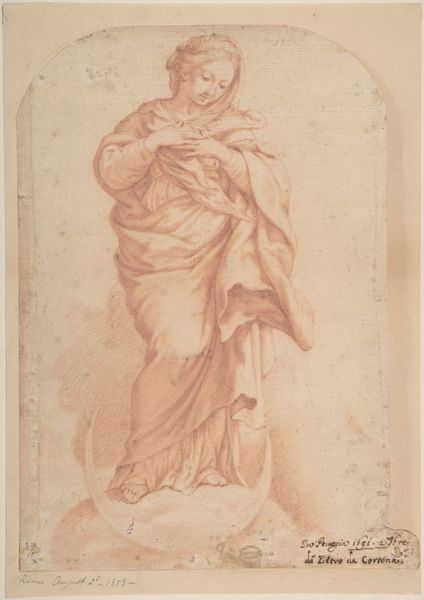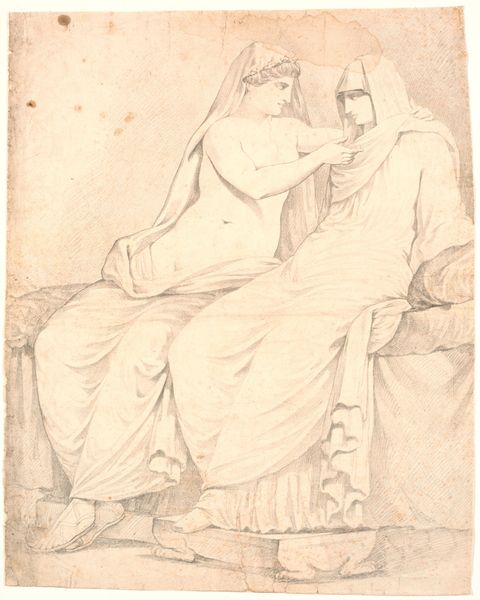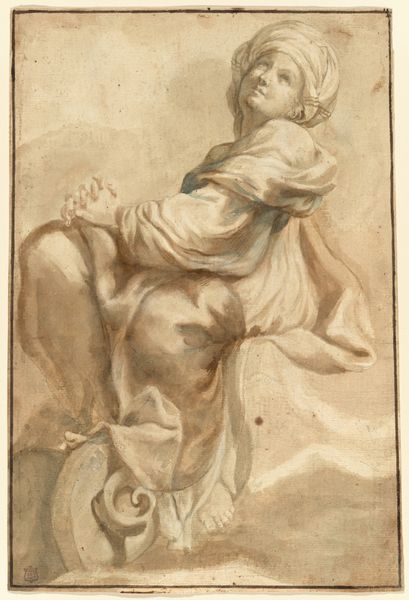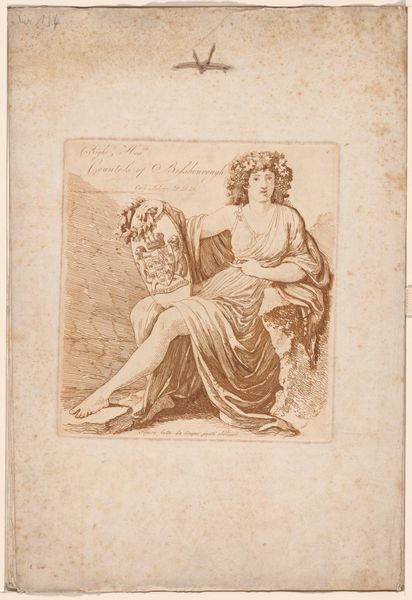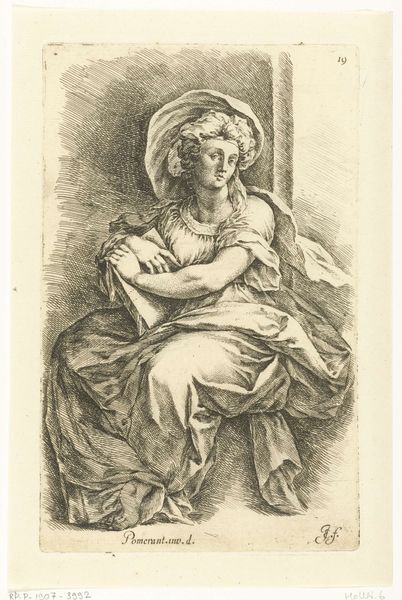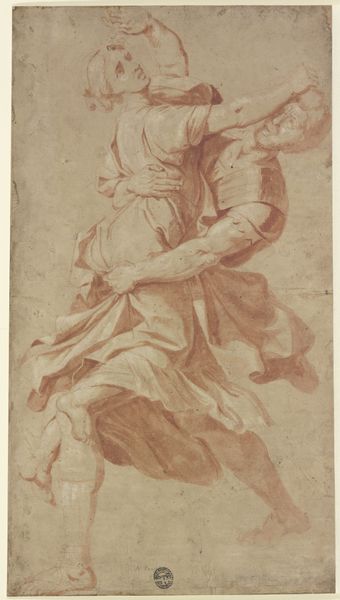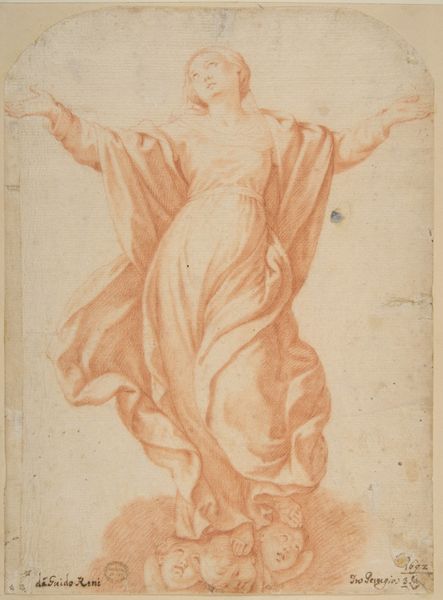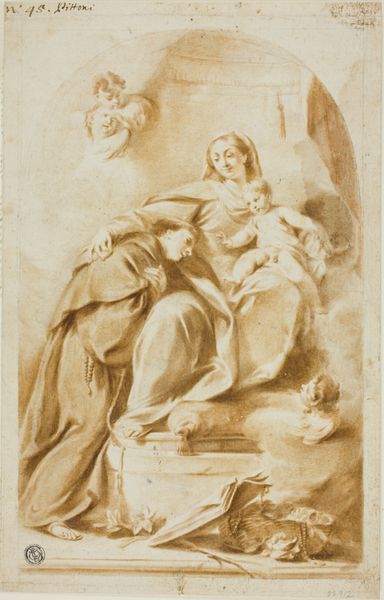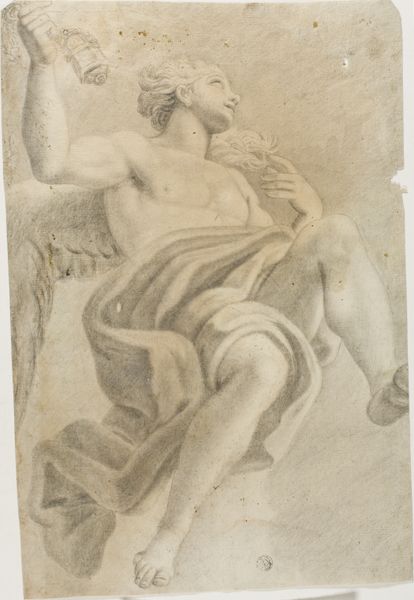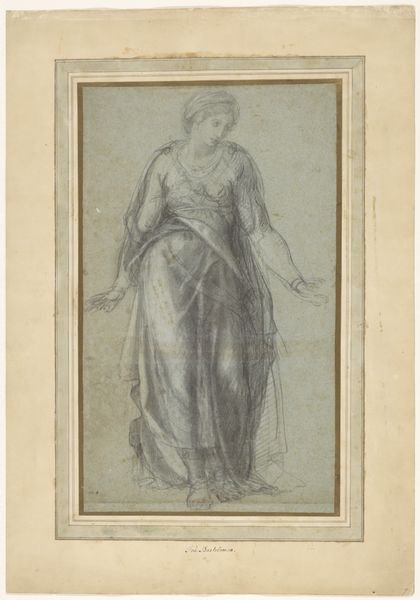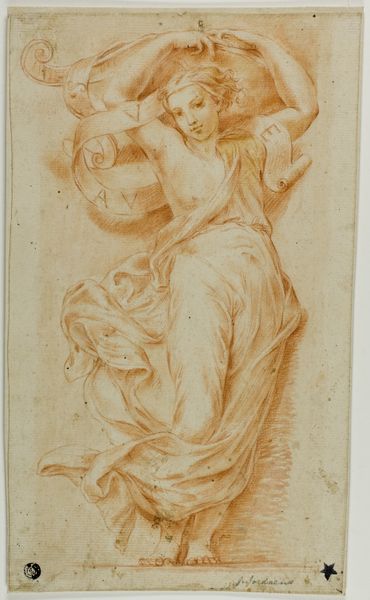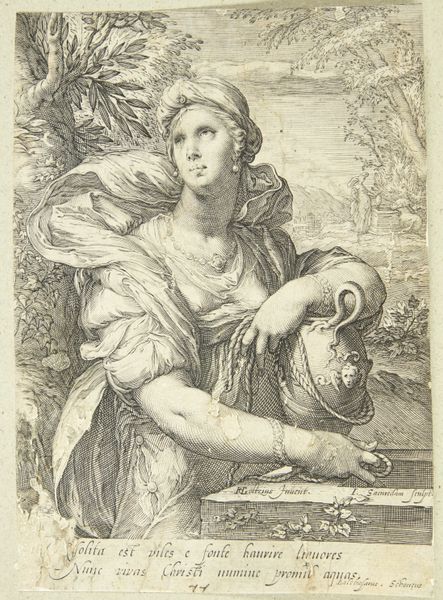
drawing, paper, pencil
#
portrait
#
drawing
#
facial expression drawing
#
pencil sketch
#
mannerism
#
figuration
#
paper
#
pencil drawing
#
pencil
#
portrait drawing
#
history-painting
#
academic-art
Dimensions: 271 mm (height) x 222 mm (width) (bladmaal)
Editor: Here we have "The Persian Sibyl," a drawing from sometime between 1568 and 1640, made with pencil on paper. It's anonymous and currently held at the SMK in Copenhagen. The woman has a compelling, almost haunting expression. What stands out to you about this piece? Curator: The power in this image resides in the enduring fascination with the Sibyls. These prophetic women, found in Greek and Roman lore, became potent symbols integrated into Christian iconography, embodying a pre-Christian understanding of divine foresight. Note how the artist renders her garments – they suggest classical drapery, yes, but also carry the weight of centuries of artistic interpretation, echoing similar figures found in illuminated manuscripts, frescoes, even tapestries. What feelings does that historical lineage evoke for you? Editor: It’s definitely powerful to consider her in the context of so many earlier interpretations, giving the piece a deep connection to the past, and making it feel almost timeless. Curator: Exactly. And that timelessness is crucial. The artist has tapped into a reservoir of cultural memory. The very act of depicting the "Persian Sibyl" links the artist to that historical lineage, but also speaks to the perennial human desire to understand the future, to grasp some meaning in the unfolding of time. The specific choice of *Persian* Sibyl, as opposed to, say, the Cumaean, opens avenues to consider cross-cultural exchange and the assimilation of diverse prophetic traditions into Western art. Editor: It makes you wonder what "predictions" the artist might have wanted this figure to evoke. What has this made you think about? Curator: The enduring human quest to decode our destiny through symbolic representation. Perhaps art, at its finest, invites us to look at our reflection across time. Editor: Absolutely. Thinking about art as cultural memory, layered over centuries, has expanded how I interpret art in general.
Comments
No comments
Be the first to comment and join the conversation on the ultimate creative platform.
